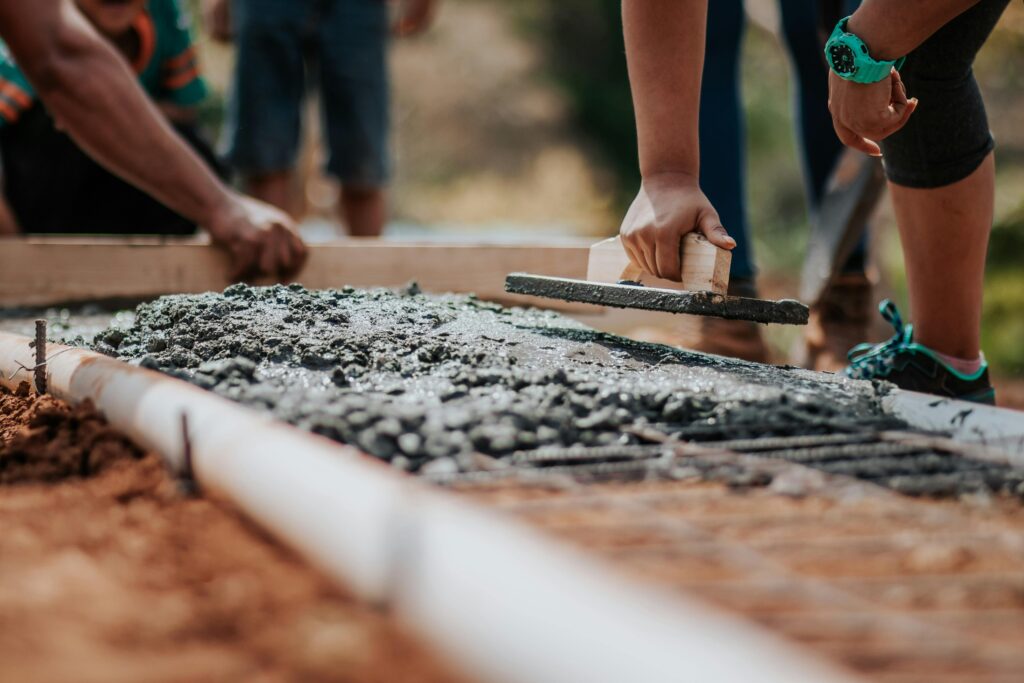Congratulations! You’re entering an exciting chapter filled with milestones like marriage, starting a family, and building a future together. One of the most important steps in this journey is often finding affordable housing. But with rising housing costs, figuring out how to buy a house can feel overwhelming, especially for first-time homebuyers.
For Starting Fresh Families seeking a safe and affordable haven to raise your children – finding the perfect home is a top priority. We understand that affordability, quality construction, family-friendly amenities, a sense of community, and perhaps even a touch of sustainability are important considerations. This journey through homeownership can be both exciting and daunting, but with the right knowledge and resources, you can find a “starter home” that fits your budget and dreams.
Understanding Affordable Housing
Affordable housing goes beyond simply finding a cheap place to live. It typically refers to housing that costs no more than 30% of a household’s gross income. However, what is considered “affordable” can vary based on individual circumstances, location, and other financial obligations.
For your family, aiming for a monthly housing expense (including mortgage payment, property taxes, and homeowners insurance) that aligns with your budget and financial goals is key. Keep in mind that this “ideal” percentage can vary depending on factors like your income, debt obligations, and location. It’s crucial to assess your unique financial situation and determine a housing expense that is manageable and sustainable in the long run.
In your search for the perfect starter home, you might come across terms like “impact investing” and “sustainable development.” Impact investing refers to investing in projects that aim to generate both financial returns and positive social or environmental impact. Some developers use this approach to create affordable housing communities specifically designed for families.
Similarly, sustainable development emphasizes building homes that are energy-efficient and environmentally friendly. These homes often incorporate features like solar panels and energy-efficient appliances, which can help lower your utility bills and reduce your carbon footprint. These concepts can be valuable to understand as you explore your options and seek out housing that aligns with your values and budget.
Financing Your Dream
There are several strategies you can use to get started. Firstly, saving diligently by setting realistic savings goals and utilizing automatic transfers can help build your down payment over time. Creating a budget and consistently contributing to your savings are essential steps in this process.
Additionally, exploring down payment assistance programs can be highly beneficial. For instance, Federal Housing Administration (FHA) loans offer down payments as low as 3.5% for those who qualify, which is particularly advantageous for first-time buyers with limited savings. Many local governments and non-profit organizations also offer down payment assistance programs. To find opportunities in your area, you can search for “[Your city/state] down payment assistance programs” to discover available resources.
Another valuable option is employer assistance. Some employers provide programs that contribute towards down payments or closing costs, often as part of a broader employee benefits package. This benefit can be especially helpful for first-time homebuyers.
The Homebuying Journey

Knowing the process empowers you to make informed decisions. Here’s a simplified breakdown of the homebuying journey:
- Get Pre-Approved: Secure a pre-approval letter from a lender, which estimates the loan amount you qualify for. This strengthens your offer and gives you an edge in competitive markets.
- Work with a Real Estate Agent: Find a reputable real estate agent specializing in first-time buyers or affordable housing. They can guide you through the process, negotiate offers, and connect you with relevant resources.
- House Hunting: Leverage online platforms like Zillow, Trulia, and Realtor.com to search for listings. Prioritize “affordable housing communities near me” and filter by your desired features like energy efficiency and family-friendly amenities. Utilize virtual tours for initial screenings and prioritize in-person viewings for shortlisted properties.
- Make an Offer: Once you’ve found a home you love, your real estate agent will help you decide on a fair offer price and submit it to the seller’s agent.
- Home Inspection: After your offer is accepted, hire a professional to inspect the home for any potential issues that might need fixing.
- Negotiate Repairs: If the inspection reveals any issues, negotiate with the seller to have them repaired or to lower the purchase price.
- Finalize Your Loan: Work with your lender to finalize the details of your loan. This includes completing an appraisal of the home.
- Close the Sale: Attend the closing meeting to sign all necessary paperwork, pay closing costs, and receive the keys to your new home!
- Move In: Now that you’re the official homeowner, you can move into your new home!
Choosing a Family-Friendly Neighborhood
Your neighborhood significantly impacts your family’s well-being. Here are some factors to consider when choosing a family-friendly community:
- Safety: Prioritize a neighborhood with low crime and good police presence. Check local crime statistics and speak with local law enforcement about the area. A safe environment is crucial for your family’s peace of mind.
- Schools: Research the quality of public schools within the district, considering standardized test scores and parent reviews. Visit schools if possible and consider the distance from your potential home to the school.
- Amenities: Look for parks, playgrounds, and recreational facilities within your community. Proximity to libraries and community centers adds to the richness of living. Also, consider the availability of essential services like grocery stores, hospitals, and public transportation.
- Sense of Community: Observe the overall vibe of the neighborhood. Look for events, community gardens, or neighborhood watch programs that foster a sense of belonging. Speak with potential neighbors to get a feel for the community spirit.
- Affordability: Ensure the cost of living in the neighborhood fits within your budget. This includes not just the price of the house, but also property taxes, utility costs, and homeowners association fees if applicable.
- Future Growth: Research the area’s development plans. Future growth can impact property values, traffic, and the overall vibe of the neighborhood.
- Noise Level: Consider the noise level in the neighborhood. If you prefer a quiet environment, you might want to avoid areas near highways, airports, or busy commercial districts.
- Walkability: A neighborhood with sidewalks, bike lanes, and easy access to shops and parks promotes a healthy lifestyle and is especially beneficial for families with young children.
Owning your dream home is a significant milestone, especially for starting families. It’s essential to find a home that fits your budget and meets your family’s needs. Bottom Billion Corporation understands the importance of affordable housing and is committed to investing in socially responsible projects. We are dedicated to ESG principles and strive to create positive social and environmental impacts through our investments. As we focus on sustainable development and impact investing, we are continually exploring opportunities to support families on their journey to homeownership.



